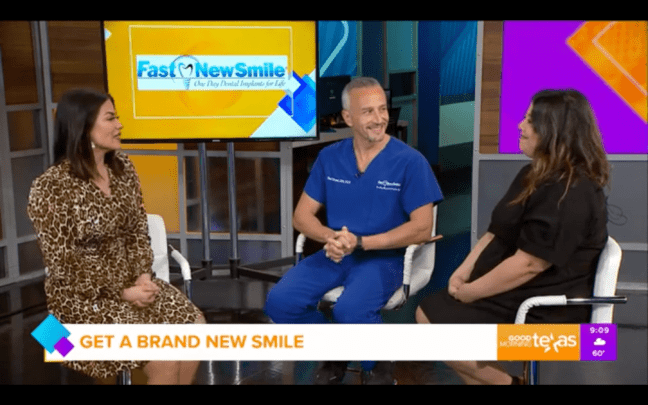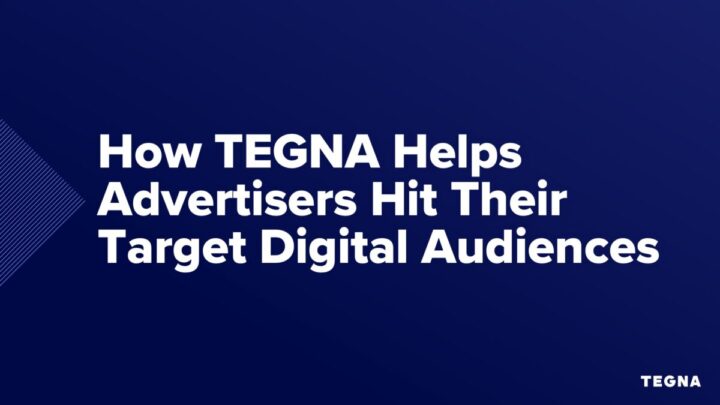The Ultimate Guide to Hospital Advertising & Marketing
TV advertising is one of the most-effective ways a healthcare provider can build brand awareness, attract patients, generate trust, and should always be considered when media planning. Our Ultimate Guide to Hospital Advertising can help hospitals of all shapes and sizes understand healthcare consumers’ attitudes, expectations, behaviors, and pain points to win their hearts and minds.

The Ultimate Guide to Hospital Advertising
In the movie Patch Adams, Robin Williams famously says, “You treat a disease, you win, you lose. You treat a person, I guarantee you, you’ll win, no matter what the outcome.” However, “Treating the person” has an entirely different meaning for healthcare marketers.
On top of providing the very best medical care, it’s critical that hospitals of all shapes and sizes understand healthcare consumers’ attitudes, expectations, behaviors, and pain points to win their hearts and minds. TEGNA’s new e-book, Checking the Pulse of Today’s Healthcare Consumer, found that patients have pain points outside their own health – things like long wait times, inconvenient office hours, confusing insurance, and high prescription costs.
As Patch Adams prescribed, you’ll win when you communicate how your hospital will meet patient expectations and explain your hospital’s remedies for pain points.
This advertising guide will help your hospital utilize the most influential and trusted media channels and how to develop the right execution of messaging so your hospital can attract new patients and better position itself as the vital choice in quality care.
What is Healthcare Marketing?
The best way to promote healthcare businesses is through various healthcare marketing initiatives. Healthcare marketing is the process of creating a brand identity and advertising on multiple channels to increase patient retention and grow business.
The State of Healthcare Consumers
TEGNA’s new e-book, Checking the Pulse of Today’s Healthcare Consumer, outlines a few vital takeaways to better understand this audience’s mindset.
- Telehealth tapers as consumers return to in-person care. Telehealth visits, which saw a proliferation of use during the pandemic, are waning. Although most patients prefer traditional in-person care to telehealth visits, telehealth rated slightly better in overall quality of care. Convenience could be a factor in this rating, especially for millennials and parents.
- Insurance is a pain point. Although the national uninsured rate is at an all-time low of 8%, many still feel insurance coverage is insufficient to receive medical care. Therefore, consumers are delaying care and treatment due to cost and are increasingly unable to pay medical bills. This lack of engagement could cause more problems down the line as their health conditions worsen.
- Consumers have a knowledge gap when differentiating between local hospitals. Hospitals are missing opportunities to highlight their differentiating factors with their marketing and advertising. Less than half of patients understand what differentiates the hospitals in their area
The State of Healthcare Advertising
The state of healthcare advertising is a complex and rapidly evolving landscape. However, our findings on the current state of healthcare advertising are the following:
Healthcare Advertising is HUGE. The US healthcare advertising market reached $22.4 billion in 2022 and includes spending on television, print ads, and social media platforms. Additionally, it’s estimated that $5 billion was spent on TV advertising for prescription drugs in 2021.
Because of rising demand, we found 46% of consumers delayed or avoided medical care because of the pandemic. These folks are now eager to address their healthcare needs and spend both time and money pursuing wellness. That means the time is now to get marketing and advertising campaigns to bring these patients in.
Local TV news is the best medicine. Local news channels are vital for communities to receive patient education – 55% of consumers learn the latest health information from local news. Additionally, 60% of consumers who get health information from local news trust brands that advertise in its content.
Why is Advertising & Marketing Important for Hospitals?
TV advertising is one of the most effective ways a healthcare provider can build brand awareness, attract patients, and generate trust. It should always be considered when media planning. It’s worked and driven tangible results for thousands of our partners, helping to make TV the second-most profitable advertising medium in the United States. It can also help the facility stay competitive, pitch in with recruiting efforts, and encourage donations.
Staying Competitive: The pandemic burned out so many employees and caregivers, leaving the healthcare industry short-staffed and causing major headaches for patients looking for care who are subject to long wait times. As a result, several chain drug stores now offer full-service clinics. These clinics are solving a problem that exists among consumers, providing convenience and increasing medical care access to populations who otherwise would have difficulty getting the care they need.
Recruiting: To win back these patients that may now visit a local Walmart instead of your facility, it’s critical for hospitals to communicate the remedies to patients’ pain points with effective advertising. Additionally, advertising can be used as a recruiting tool to bring new caregivers into the system.
Education and Awareness: TV advertising allows healthcare brands to raise awareness and educate the public on health issues. This leads to better prevention and early detection, access to treatment, increased advocacy, and reduced stigma around health conditions. Raising awareness can also influence policymakers to take action on important health issues, such as increasing access to healthcare or funding research for new treatments.
Goals of Hospital Advertising & Marketing
Every healthcare provider will have unique challenges and goals. On top of those mentioned above – Education and Awareness, Staying Competitive, and Recruiting – TV advertising can help accomplish a number of additional goals for hospitals, including:
- Building Brand Awareness: With the right frequency, reach, and creative, your hospital will be top of mind when people need healthcare.
- Attracting New Patients: A hospital can’t operate without patients. Treating new patients may involve targeting specific demographics or geographic areas and highlighting the hospital’s expertise in certain areas of healthcare.
- Patient Loyalty: Will existing patients continue to choose your hospital for their healthcare needs? TV advertising can be used to reinforce the positive experiences that patients have had at the hospital and increase referrals to friends and family.
- Differentiation: Checking the Pulse of Today’s Healthcare Consumer found that only 42% of patients understand what differentiates the hospitals in their area. However, local news is helping to move the needle as these viewers are more likely to understand what makes hospitals unique – and advertising with your local news station can help achieve this outcome.
- Community Connection: A recent study from ZenoGroup found that 94% of global consumers feel it’s important to engage with brands with a strong purpose – like advocating for social justice, helping at an animal shelter, or donating to food banks. On top of that, 76% of consumers say that when a company leads with a purpose, they are more likely to trust and be loyal to that company. Local TV advertising – including sponsorships and partnering with local TV stations for community events – allows brands to showcase their commitment to the community, which in turn helps to generate trust and further build brand awareness.
How Do You Market a Hospital?
The best way to market a hospital is by taking an omnichannel approach, delivering a unified message across several channels. Specifically, utilizing local advertising channels drives community awareness of your healthcare business from a trusted source.
5 Tips for Successful Hospital Marketing Campaigns
Based on the findings of Checking the Pulse of Today’s Healthcare Consumer, a hospital’s marketing and advertising messages should do the following:
1. Encourage the Return to In-Person Care
Reassure consumers with the benefits and perks of the in-office experience. For example, you can use TV’s visual medium to show off visual displays with predicted – and short – wait times and elevate awareness of how this tech will improve the overall patient experience.
2. Increase Transparency Around Costs
To help avoid sticker shock, explore payment plan options to help consumers better afford costly procedures or highlight a sliding scale for those without insurance.
3. Communicate Key Differentiators
Hospitals have a major opportunity to highlight competitive differentiation using cross-platform video storytelling. Hospitals should consider lifestyle integrations with trusted TV partners to help contextualize the hospital’s critical role in its community.
4. Partner with Local News Organizations
It bears repeating: Local news channels are a vital way for communities to receive patient education and 60% of consumers who get health information from local news trust brands that advertise in its content. These stations have earned the trust of their viewers to amplify your message at scale.
5. Tell an Important Story
When audiences become captivated and emotionally connected to an ad, it improves brand awareness, ad recall, and increases purchase intent. Before the pandemic, creative that performed well told a patient’s story. During the pandemic, the best-performing ads focused on health and wellness – things like how to keep yourself safe. In 2023, we’re seeing that viewers want to hear a caregiver’s perspective as much as they want to hear the patient’s.
Hospital Advertising Examples
What makes an effective TV ad? Below are some examples of TV advertising success stories from brands that have teamed up with TEGNA.
WFAA’s Facts for Families with Children’s Health
HCA Healthcare: We Show Up
Akron Children’s Hospital: Tips to Grow
Start Advertising Your Hospital With TEGNA Today
Large audiences, trustworthy content to align with, high recall, emotional connections, extended reach, and opportunities to create more than just a regular commercial are just a few of the factors that make TV advertising so effective. It’s worked and driven tangible results for thousands of our partners, helping to make TV the second-most profitable advertising medium in the United States.
Advertising, especially alongside trusted local news broadcasts, reaffirms a brand’s place in the community and showcases that your brand can also be trusted with the right amount of frequency and exposure to target audiences. By aligning with the unique content opportunities that TEGNA offers, your healthcare brand has an opportunity to be the talk of the town.
TEGNA delivers proven results through simplified multi-platform advertising solutions that connect your business to the audiences that matter most via Broadcast TV, OTT Advertising, and Digital Solutions, including Targeted Display & Retargeting, as well as campaign measurement and optimization with TEGNA Attribution. TEGNA stations also offer a variety of customizable content sponsorships, as illustrated above.
Let’s get in touch if you’re thinking of amplifying your hospital brand’s TV efforts, creating a stronger hospital marketing plan, or joining TEGNA affiliates to serve the greater good of our communities.
Frequently Asked Questions
How do you promote medical services?
To increase awareness and bring in new clients, promoting medical services through multiple local advertising channels is the way to go. Consider also using advertising as an opportunity to build your brand and to showcase what makes your hospital different.
What is a marketing plan for a hospital?
A hospital marketing plan outlines the strategic approach to a hospital’s advertising and communication efforts to ensure a unified, optimized message across channels.






















